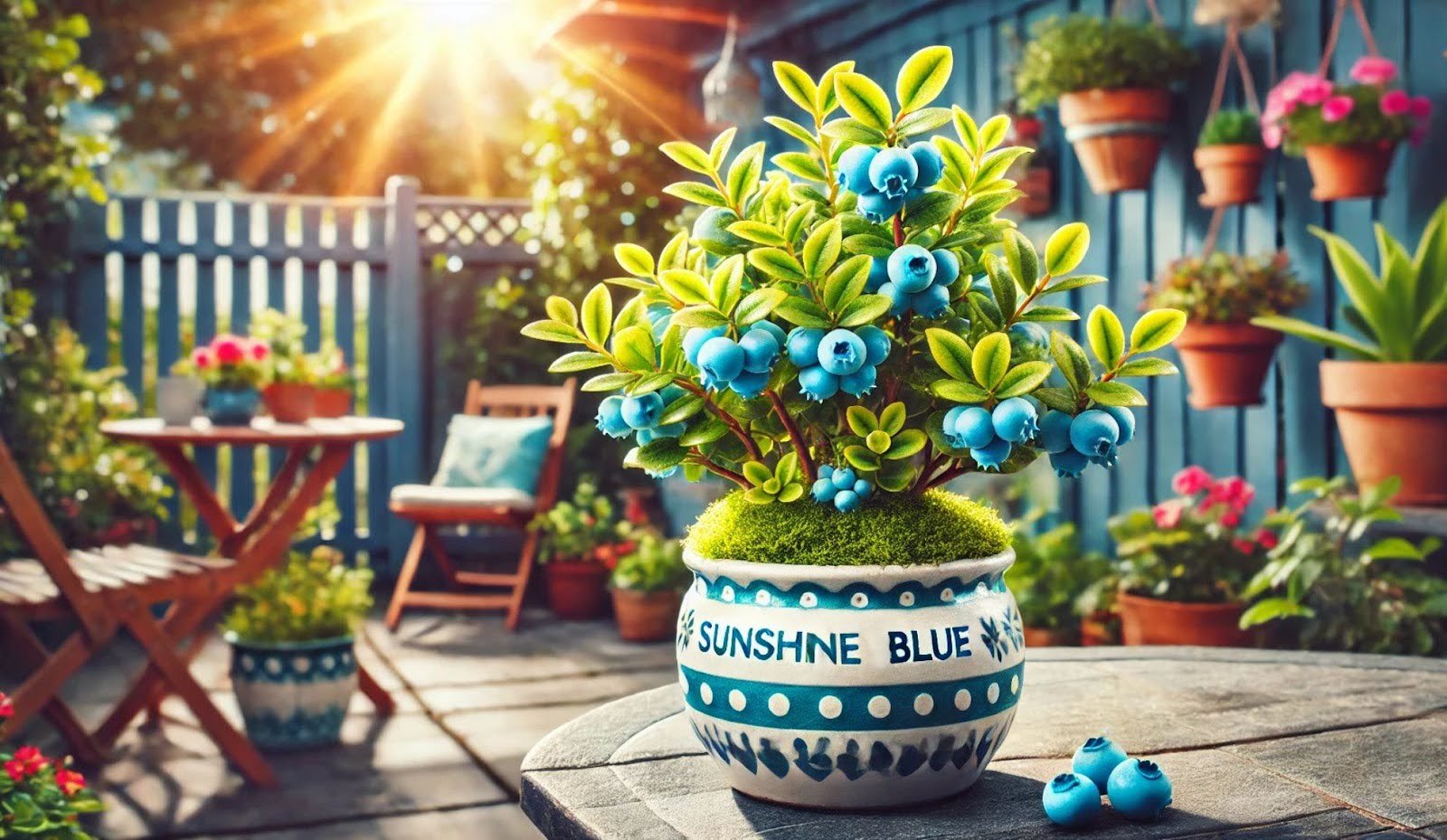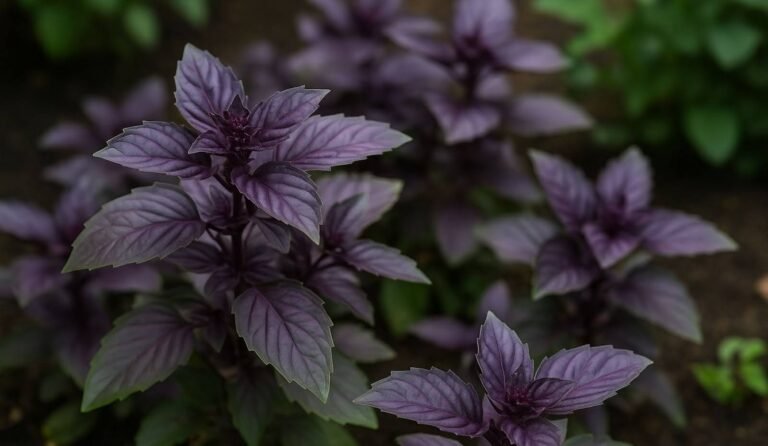Sunshine Blue Blueberry Plant: The Perfect Small-Space Berry
The Sunshine Blue Blueberry Plant is a game-changer for small-space gardeners. This compact, self-pollinating bush pumps out sweet, juicy berries without the fuss. It thrives in containers, tolerates different soil types, and even adds a pop of color with its pink blooms and rich fall foliage.
Worried about cold winters or scorching summers? No problem—this hardy plant can handle both! Whether you’re a newbie or a seasoned grower, this little powerhouse makes berry-growing a breeze. Keep reading to learn how to make it thrive in your space!
What is the Sunshine Blue Blueberry Plant?
The sunshine blue blueberry plant is a self-pollinating, semi-evergreen blueberry variety that grows well in various climates. It is particularly popular for its compact size, making it perfect for small gardens and container gardening.
What sets it apart from other varieties is its ability to tolerate a wider pH range, which means it can grow in soils that aren’t as acidic as traditional blueberry plants require. One of its most stunning features is its pink-tinged flowers that bloom in spring, followed by clusters of plump, juicy blueberries in mid to late summer.
The dark green foliage turns a gorgeous burgundy in fall, making it an ornamental delight throughout the year. Because it is partially evergreen, it retains its leaves in warmer climates, adding beauty even in winter.
Ideal Growing Conditions for the Sunshine Blue Blueberry Plant
Sunlight Requirements
Sunshine Blue blueberries love the sun, but how much is too much? Ideally, these plants require at least six to eight hours of direct sunlight daily to produce a healthy yield. However, they can also tolerate some partial shade, making them suitable for areas where sunlight is limited. But can too much sunshine harm your blueberry plant?
In extremely hot climates, excessive sun exposure can cause the plant’s leaves to wilt or scorch. If you live in an area with intense summer heat, consider providing afternoon shade or using mulch to keep the soil cool and moist.
Soil and pH Requirements
One of the biggest challenges with growing blueberries is maintaining the correct soil acidity. Traditional blueberries require a pH of 4.5 to 5.5, but Sunshine Blue is more adaptable and can grow in soil with a slightly higher pH. Still, for best results, acidic soil is recommended. If your soil is too alkaline, you can amend it with peat moss, pine needles, or sulfur to lower the pH.
The soil should also be well-draining but moist. Sandy loam or loamy soil mixed with organic compost works best for Sunshine Blue blueberries. Avoid clay-heavy soils, as they retain too much moisture, leading to root rot.
Temperature and Climate Suitability
Sunshine Blue blueberries thrive in USDA Hardiness Zones 5-10, making them drought-tolerant and cold-hardy. In colder regions, they may lose some leaves in winter, but they will bounce back once the temperatures rise. In warmer climates, they retain their foliage year-round, adding an evergreen touch to your garden.
If you live in an area with harsh winters, it’s best to mulch around the base of the plant to protect the roots from freezing temperatures. For extreme heat, regular watering and partial shade will prevent the plant from drying out.
How to Plant a Sunshine Blueberry Plant

Choosing the Right Location
Before planting your Sunshine Blue blueberry bush, choose a location that receives full sun but has some protection from harsh afternoon heat if necessary. If you’re planting in a container, make sure to place it near a sunny window or balcony where it can receive sufficient light.
Planting in Containers vs. Garden Beds
Sunshine blue blueberry plants are excellent for container gardening, making them perfect for small spaces. If planting in a container, choose a pot at least 12-16 inches in diameter with drainage holes to prevent waterlogging. Use a high-quality acidic potting mix to give your plant the best growing environment.
For garden planting, space each plant about 3 feet apart to allow for healthy growth and airflow. Dig a hole twice the size of the plant’s root ball and mix in some organic compost or peat moss to enrich the soil.
Watering Requirements
Blueberries love consistent moisture, but too much water can be harmful. Aim to water deeply once or twice a week, depending on your climate. The soil should remain moist but not soggy. If you’re growing in containers, check the soil moisture regularly, as pots tend to dry out faster.
Fertilization Needs
To encourage healthy growth and fruit production, use an acidic fertilizer specifically formulated for blueberries. A balanced 10-10-10 fertilizer or organic options like cottonseed meal and fish emulsion work well. Feed your plant in early spring and again after harvesting for best results.
Pruning and Maintenance
Regular pruning helps keep your Sunshine blueberry plant healthy and productive. Remove any dead or weak branches in late winter before new growth begins. If the plant becomes too dense, thin out the older branches to encourage better air circulation and more fruit production.
Mulching for Moisture Retention
Applying a layer of mulch around the base helps retain soil moisture, regulate temperature, and suppress weeds. Additionally, consider adding companion plants for blueberry to enhance soil health and attract beneficial insects.
Blueberry Plant Too Much Sunshine
While blueberry plants generally thrive in full sun, receiving around 6–8 hours of direct sunlight daily, excessive exposure—especially in very hot or dry climates—can stress the plant. Too much sunshine can lead to scorched leaves, reduced fruit quality, and moisture loss in the soil.
To protect your blueberry bush, ensure it’s planted in well-drained, acidic soil and consider providing some afternoon shade or using mulch to retain soil moisture during extreme heat. Balancing sunlight with proper care helps promote healthy growth and a bountiful harvest.
FAQ
Can I grow Sunshine Blue blueberries indoors?
Yes, they can thrive indoors if placed near a sunny window with at least 6-8 hours of light.
Do I need multiple plants for pollination?
No, Sunshine Blue is self-pollinating, but multiple plants can increase yields.
How often should I water my plant?
Water once or twice a week, ensuring the soil stays moist but not soggy.
What is the best fertilizer for Sunshine Blue blueberries?
Use an acidic fertilizer, such as a 10-10-10 mix or organic options like cottonseed meal.
When will my plant start producing fruit?
Expect fruiting in its second year, with peak yields in later years.
Conclusion
The Sunshine Blue Blueberry Plant is an excellent choice for anyone looking to grow delicious, homegrown blueberries in a small space. Its compact size, high yield, and adaptability make it a favorite among both novice and experienced gardeners.
With the right care—proper sunlight, watering, and soil conditions—you can enjoy an abundant harvest year after year. Whether you grow it in your backyard, patio, or indoors, this hardy blueberry bush is sure to reward you with tasty berries and stunning ornamental beauty throughout the seasons.







